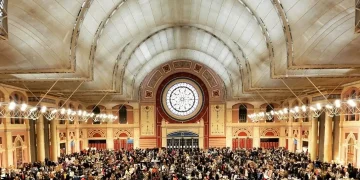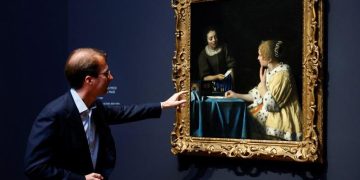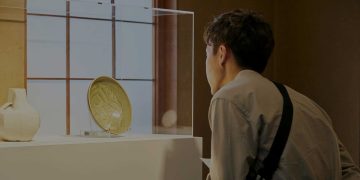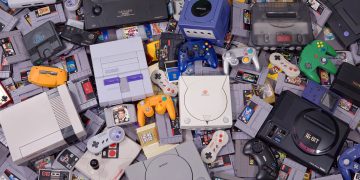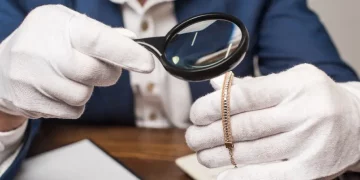Introduction: The Changing Landscape of Collectibles
The world of collectibles is never static. What was once highly sought after can quickly lose its appeal, and new trends can arise out of nowhere. While some categories have consistently held value—such as rare art, vintage toys, or classic automobiles—the market for other items can be unpredictable. For seasoned collectors, keeping an eye on shifting trends and adjusting strategies accordingly is crucial to remaining competitive. The key to success in this field lies not only in knowledge and experience but also in adaptability.
Over the past few years, collectors and investors have focused heavily on a few dominant categories. However, with the global economic situation, the rise of digital technologies, and changing consumer preferences, some of these categories are showing signs of stagnation or oversaturation. This presents an opportunity for those who are willing to adjust their strategies and diversify their portfolios.
In this article, we will examine how experienced collectors are adapting to these changes and which new categories are gaining traction. We will explore the importance of staying informed and flexible in the ever-evolving collectibles market.
The Market Shifts: Why Experienced Collectors Are Adjusting
1. The Impact of Digitalization
One of the most significant factors influencing the collectibles market in recent years has been the rise of digital technologies. Online platforms like eBay, Amazon, and specialized marketplaces have made it easier for collectors to buy and sell items worldwide. Digital art and non-fungible tokens (NFTs) have also become major topics of discussion among collectors, as they present a new way to own and trade rare assets.
Moreover, social media has played a pivotal role in influencing consumer behavior. Instagram, TikTok, and YouTube have allowed collectors to showcase their prized possessions and reach a global audience. This shift toward online platforms and digital assets is making traditional collectibles—those with physical presence—face challenges they have never encountered before.
2. Oversaturation of Popular Categories
Certain categories of collectibles, like vintage toys, limited-edition sneakers, or specific comic books, have been incredibly popular over the past few years. While these items have garnered significant attention, this popularity has also led to oversaturation in the market. As a result, the prices for some of these items are becoming inflated, with returns on investment no longer as promising as they once were.
Experienced collectors are beginning to recognize that the market for these well-known categories may be reaching a peak, prompting them to look elsewhere for future opportunities. Many seasoned investors are now shifting focus to niche categories or emerging trends that have yet to hit the mainstream.
3. Changing Consumer Preferences
The preferences of modern collectors are evolving as well. Younger generations are showing interest in collectibles that reflect their interests and values, such as eco-friendly or sustainable products, digital art, and pop culture memorabilia. As such, experienced collectors are beginning to diversify their portfolios to include these more modern and progressive categories.
For example, the demand for NFTs and digital assets has exploded in recent years, with some rare digital artworks fetching millions of dollars at auctions. At the same time, collectible vinyl records, vintage gaming consoles, and other retro items are regaining popularity among younger collectors who value nostalgia and uniqueness.
Emerging Categories to Watch
1. NFTs and Digital Art
One of the most significant trends reshaping the collectibles market is the rise of NFTs (Non-Fungible Tokens) and digital art. While these assets were initially viewed with skepticism, they have quickly become mainstream, with high-profile auctions and celebrity endorsements driving their popularity.
NFTs offer several advantages to both creators and collectors. For creators, NFTs allow for a new way to monetize digital content, whether it’s artwork, music, or video. For collectors, NFTs offer verifiable ownership of digital assets, creating a sense of scarcity and value similar to traditional collectibles.
In the past few years, some digital artworks have sold for millions of dollars, with well-known artists like Beeple leading the way. As the NFT market matures, it is expected that more artists will enter the space, creating new opportunities for collectors.
2. Vintage and Retro Gaming
As mentioned earlier, nostalgia plays a significant role in the collectibles market. Vintage video games, consoles, and accessories are becoming increasingly sought after. Collectors who grew up with these games are now willing to pay top dollar for rare and limited-edition items from their childhood.
The rise of retro gaming has been fueled by a combination of factors. Firstly, the resurgence of classic gaming platforms, such as Nintendo’s NES and Sega’s Genesis, has sparked renewed interest in retro games. Secondly, the continued popularity of streaming platforms like Twitch and YouTube, where gamers often revisit classic titles, has driven up demand for vintage games and consoles.
3. Sustainability and Eco-friendly Collectibles
As sustainability becomes an increasingly important value for consumers, eco-friendly collectibles are gaining momentum. This category includes items made from sustainable materials, such as upcycled goods, recycled items, and products that have minimal environmental impact.
Companies are responding to this demand by producing collectibles that align with eco-conscious values. For example, limited-edition sneakers made from recycled materials or environmentally friendly fashion items are becoming highly sought after. Furthermore, collectors who are passionate about environmental issues are choosing to invest in pieces that reflect their commitment to sustainability.
4. Pop Culture Memorabilia
Pop culture memorabilia, particularly related to TV shows, movies, and music, has always been a significant part of the collectibles market. However, recent trends show that these items are becoming even more desirable as the demand for nostalgia grows.
Memorabilia from franchises like “Star Wars,” “Harry Potter,” and “Marvel” continues to see high auction prices. Additionally, items related to emerging pop culture phenomena, such as hit streaming series on platforms like Netflix and Disney+, are gaining attention.
For experienced collectors, this trend presents an opportunity to diversify beyond traditional categories and tap into a market that is constantly evolving with new entertainment properties.

Adjusting Your Collecting Strategy
1. Diversify Your Portfolio
One of the most important lessons for seasoned collectors is the value of diversification. Just as investors in the stock market spread their investments across various sectors to mitigate risk, collectors should consider expanding their portfolios to include a range of categories.
Instead of relying solely on one category, such as vintage toys or limited-edition sneakers, consider branching out into emerging categories like NFTs, digital art, or eco-friendly collectibles. By doing so, collectors can protect themselves against downturns in any one particular market and increase their chances of finding high-value items.
2. Stay Informed and Adaptable
The key to success in the collectibles market is staying informed and adaptable. This means keeping a close eye on emerging trends, tracking the performance of various categories, and being willing to adjust your collecting strategy as needed.
Follow industry news, attend auctions, participate in online forums, and engage with other collectors to stay up to date with the latest developments. The more you understand the market, the better equipped you will be to make informed decisions.
3. Build Relationships with Experts and Curators
Another way to adjust your strategy is by networking with experts and curators in specific categories. These individuals have deep knowledge of particular markets and can provide valuable insights into what is trending and what may be undervalued.
By building relationships with curators, dealers, and other collectors, you can gain access to exclusive opportunities, insider information, and early access to rare collectibles. These connections can help you stay ahead of the curve and make informed decisions when it comes to purchasing and selling items.
Conclusion: The Importance of Adjusting Your Strategy
As the collectibles market continues to evolve, seasoned collectors are already adjusting their strategies to stay ahead of the curve. The days of focusing solely on last year’s popular categories are over. To succeed in this fast-changing landscape, collectors must be willing to diversify their portfolios, embrace emerging trends, and stay adaptable to new opportunities.
By keeping an eye on emerging categories like NFTs, digital art, retro gaming, and eco-friendly collectibles, collectors can position themselves for long-term success. Additionally, staying informed and building relationships with industry experts can provide a competitive edge in an increasingly crowded market.
The future of collecting is dynamic, and those who are willing to adapt will be the ones who thrive. Whether you are a seasoned collector or just starting your journey, now is the time to explore new opportunities and adjust your strategy to stay ahead in the ever-evolving world of collectibles.













